Requiem for Moog (and other synthesizer) covers albums

Synthesizer covers albums. They were a minor rage in the late-60s to mid-70s, thanks largely to the success of Wendy Carlos’ epic Switched-On Bach, one of the very first albums arranged entirely entirely on the Moog synthesizer that actually sounded like music. Before that, synthesizers was either a minor component in a larger band setting, or was only being used for ultra-experimental works that barely functioned as music proper. If you’ve ever gone record shopping, you’ve probably stumbled across these covers albums a budget bin. Maybe you picked one up, laughed at the audacity of it and put it back down. Or maybe you bought a couple just for giggles, only to forget about them soon after.
Or maybe you’re like me and you’ve bought somewhere between 50 and a hundred of them. (It’s hard for me to keep count, my collection is spread across two continents at the moment).
I’ve always been interested in these records, one of the very first albums I bought on vinyl was Moog: The Eclectic Electrics of Dick Hyman, and I guess that just got me hooked. While living in the states, I would always pick up other Moog albums when I found them, quickly snagging up most of Wendy Carlos’ discography, as well as knock-offs like Switched-On Rock, The Happy Moog, Moog Plays Beatles, and so on. But ever since I moved to Japan, my collection of synthesizer records has really taken off. Maybe it’s because I live in Tokyo, the largest city in the world, and there’s just more variety in the shops. Or perhaps these record were bigger in Japan. But whatever the reason, it feels like I don’t go a week or two without finding some utterly bizarre and random collection of covers.
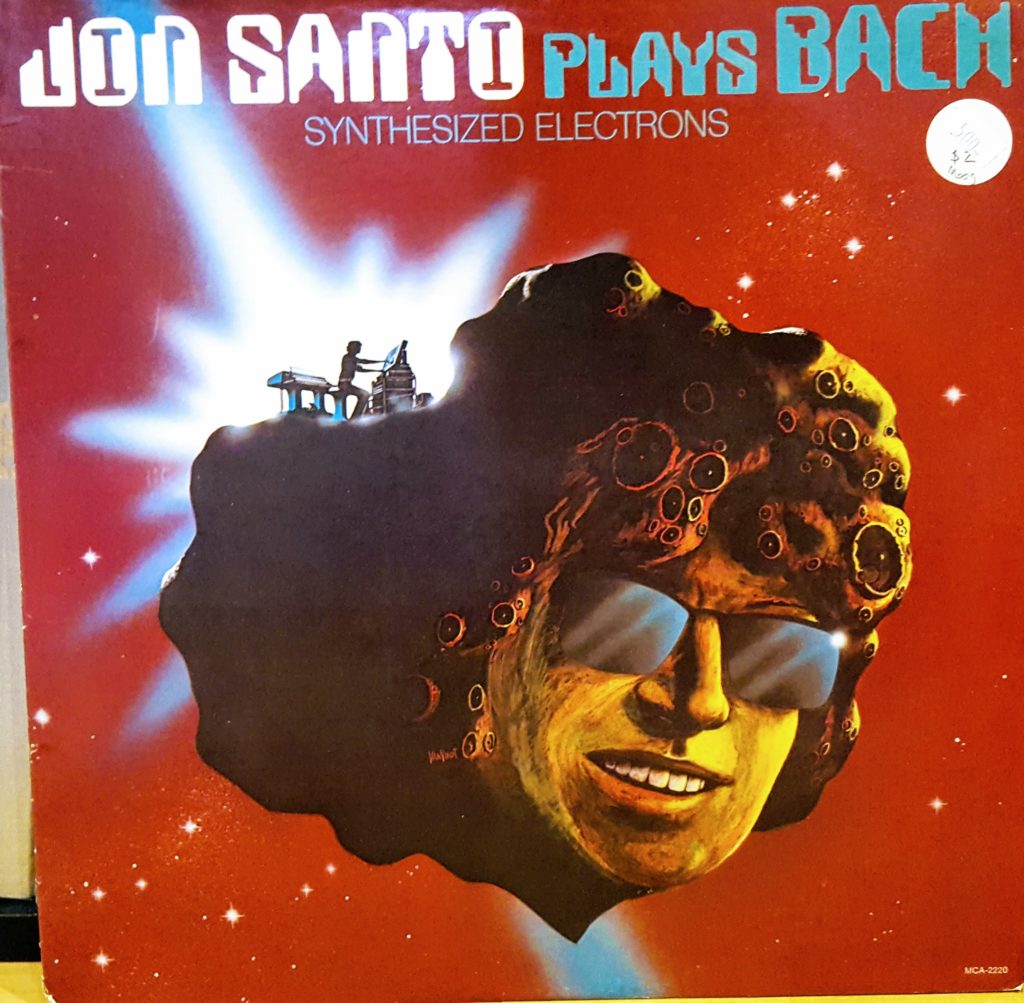
Duuuuuuuuuuuuuuuuuuuuude
I absolutely adore these records, I love everything about them. Their aesthetic is often amazing. Many of the covers feature just the stupidest, craziest or just plain bizarre art, often playing up a “futuristic” or “robotic” angle, as if the album was created in the future by some synthetic being. I also love the diagrams and liner notes. A lot of people who bought these albums back in the day must’ve not understood exactly how they were made. Because even while the covers seem to credit the instruments over the composers or creators, the liner notes will often go out of their way to mention that these albums were made by people and not computers running some program.
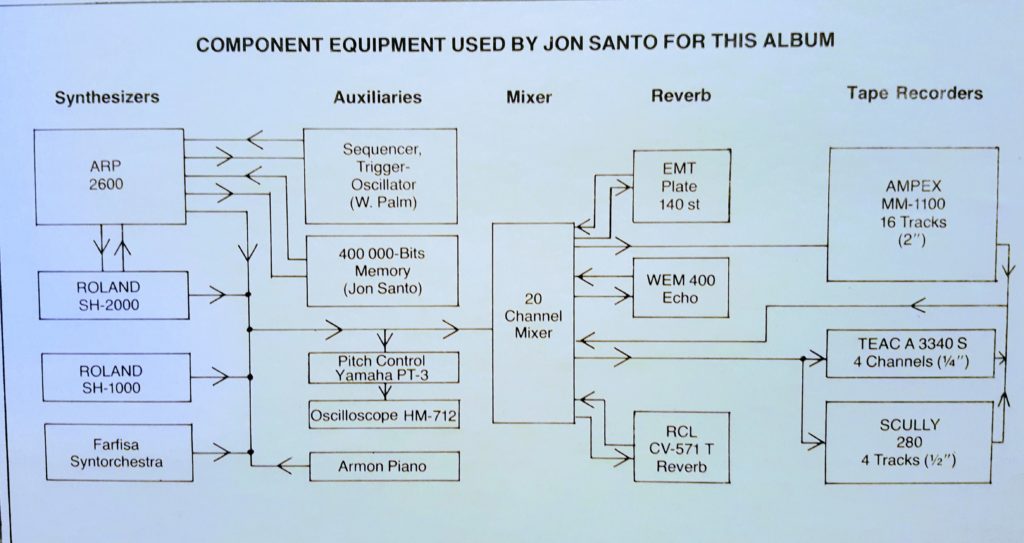
Jon Santo wants you to know he wasn’t fucking around.
But even without the cornball graphics and overly extensive liner notes, I love these records. I love them for the music, and completely in an unironic way. Pure synthesizer albums, meaning the ones that only use the synthesizer and no additional instrumentation, have an odd, almost other-worldly quality to them. They are often minimalist and sparse. This was usually not a stylistic choice, early Moog synthesizers were monophonic. They could only play one note at a time, meaning that a lot of overdubs were needed to make even the most simple of arrangements. But whatever the reason, the result is often beautiful, and sometimes even haunting. A good synthesizer cover of “Eleanor Rigby” manages to be just as gut-wrenching and powerful as the original. And I have Moog-focused renditions of classics like “Bridge Over Troubled Water,” “Green Sleeves” and even “Moon River” that take the originals and infuse them with a sense of melancholy that I just don’t hear on the originals.
Of course, I like just as many of them because they great big dumb fun. Wanna liven up any party? Crank up a synthesizer cover of “Venus” or “La Bamba.” Even the people who hate it will find themselves giggling a bit. I’ve found that nothing is as good of a pick-me-up as a Moog take on “Apache” or the theme to Shaft. The arranger’s willingness to tackle seemingly anything and everything never leaves me without a smile on my face.
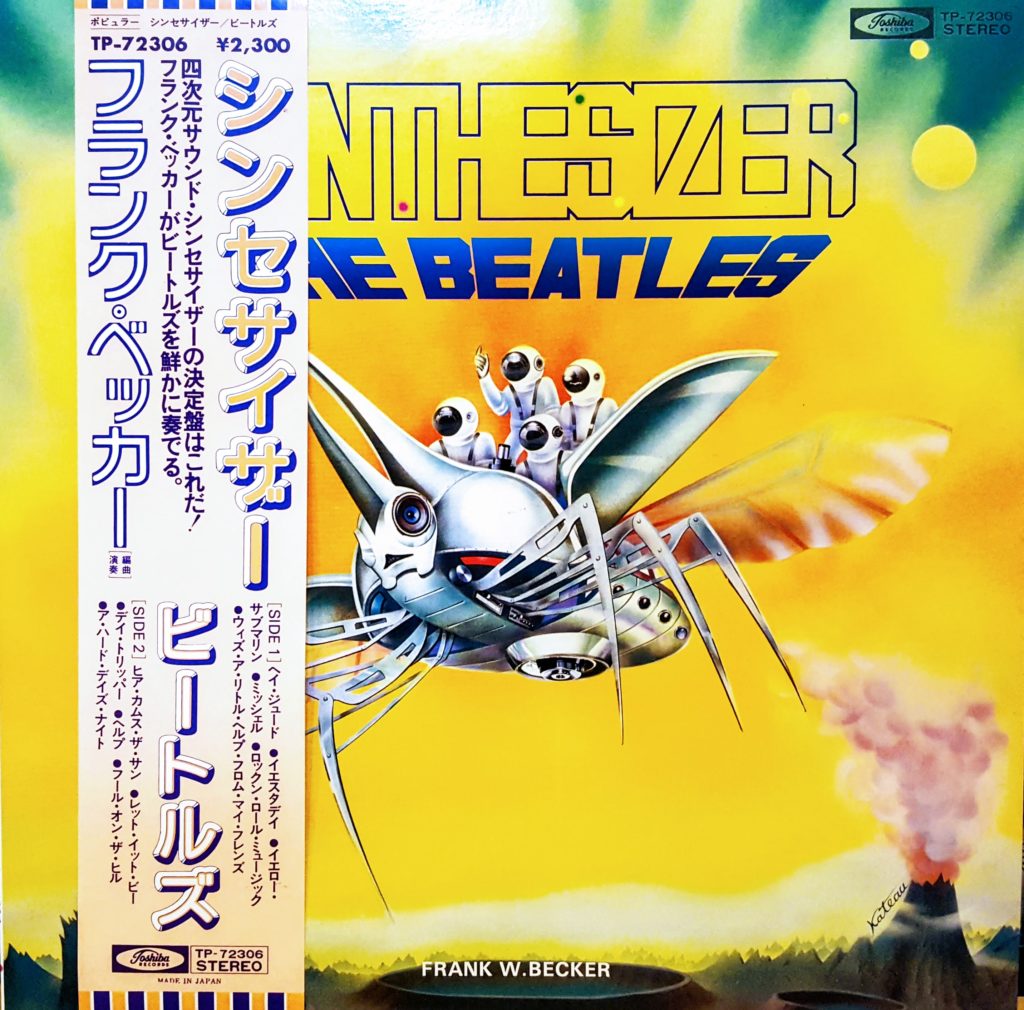
THIS COVER IS AMAZING
I really do think these records were bigger in Japan. Mostly because a lot of the ones I’ve been buying as of late appear to be Japanese exclusives. Sometimes they’re Japanese variants of albums that were made available in other countries, with (sometimes radically) different album art and occasionally slightly different track lists. But other times they are entirely unique to Japan. Sometimes they’re by Japanese people, but other times they seem to be by foreigners who, for whatever reasons, found a niche market here in Japan and just ran with it.
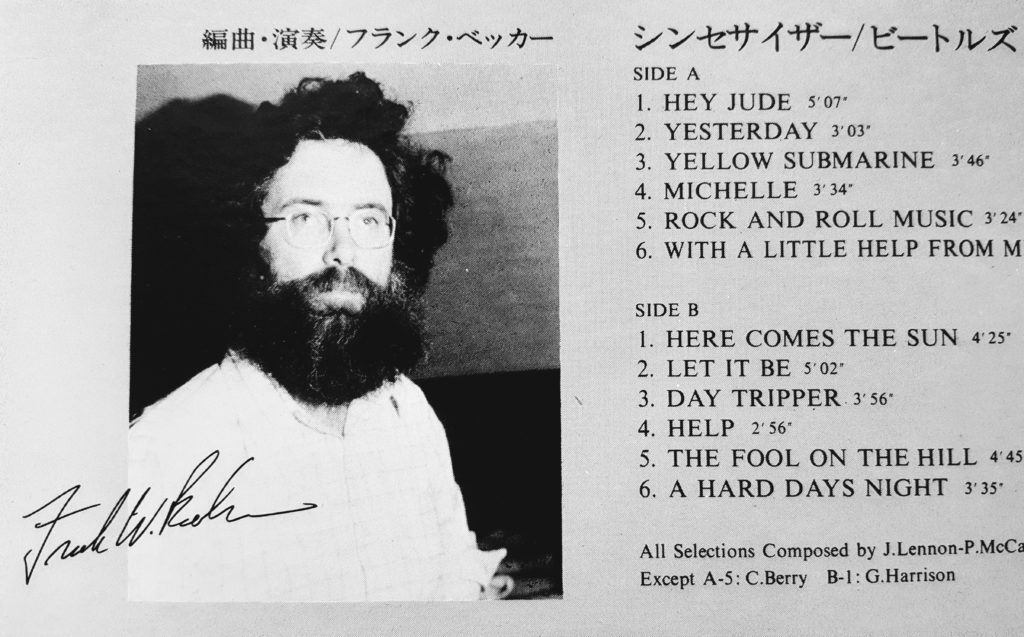
Frank W. Becker’s were actually performed by his epic beard.
One such composer and arranger is Frank W. Becker, who released several synthesizer/Moog albums in Japan in the late 70s. I love his original compositions, but I keep coming back to his two albums of Beatles covers. I have a lot (seriously, a lot) of synthesizer covers of Beatles tracks, but Frank’s are a cut above. His arrangements can take the songs places you wouldn’t think. His cover of “Ticket To Ride” uses the synthesizers to mimic the sound of a train, echoing the song’s lyrics, for example. Another Japan exclusive artist I love is E-Project, who released an album of synthesizer music called Synthesizer Trek in 1980. As you can imagine, it’s mostly comprised of synthesizer takes of classic sci-fi films. The best is their rendition of the Star Trek theme, which includes a strange, bounding backbeat that’s as fun as it is entirely out-of-place.

One Japanese native who really embraced the synthesizer, both in its original analog and later digital forms was Osamu Shoji. Throughout the 70s and well into the 80s Shoji put out a ton records, sometimes original material, sometimes covers, all amazing. He did a Star Wars covers record, another was all Bees Gees interpretations. And he released countless anime covers albums, all part of the Digital Trip series, an entire series of records released in Japan that took anime music and gave them the synthesizer treatment. That series is rad as hell, one that deserves its own separate article.
I could rattle off dozens of other fantastic arrangers and composers who worked on these albums, and not just the Japan-exclusive ones. The most well-known of the bunch are probably Perrey and Kingsley, a duo whose amazing work actually predates Wendy Carlos. But there are others who have been forgotten, like Claude Denjean, Hans Wurman, Rick Powell, Marty Gold, Norman Dolph (who served as the engineer for The Velvet Underground) and many, many more. In a time when so few artists dare to be irreverent or light-hearted, their fun and at times even goofy work never fails to lift me up just a little bit when I’m feeling down.
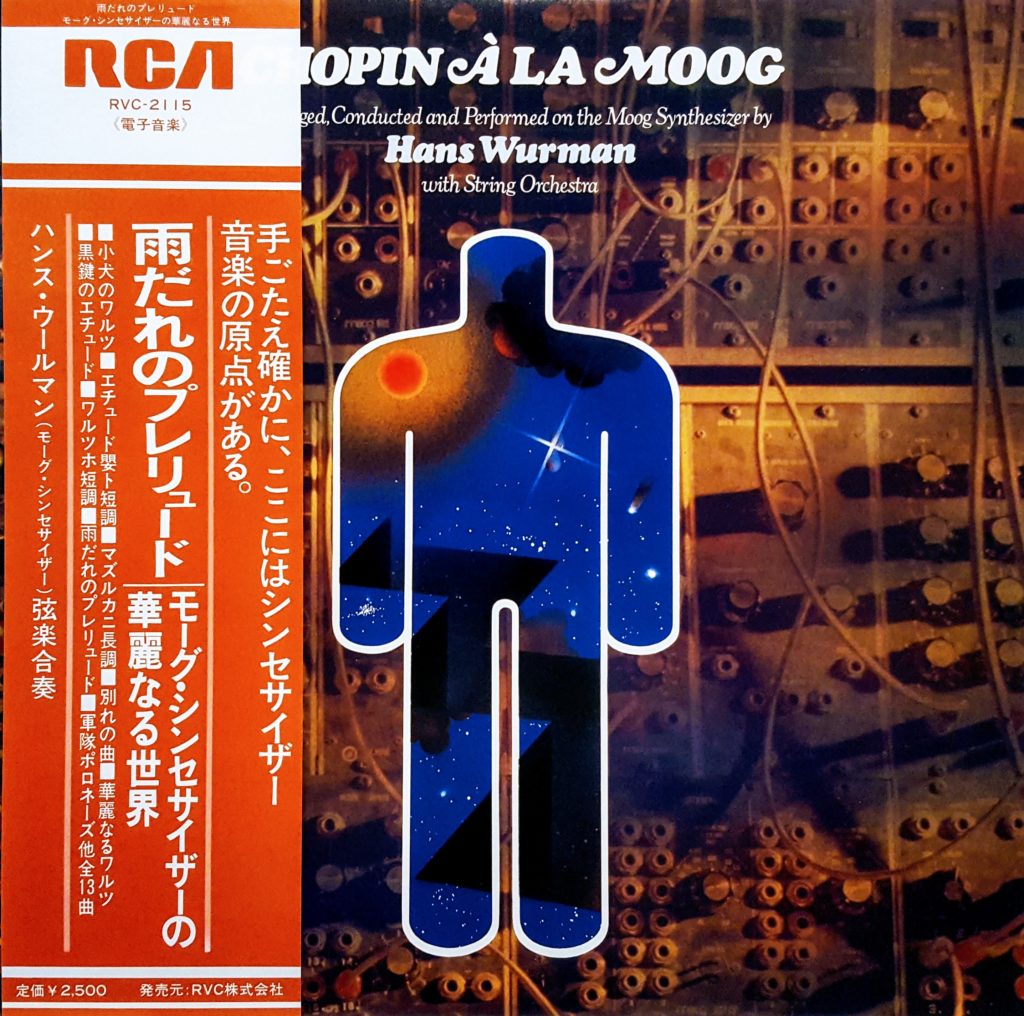
Sadly, so much of this stuff is hard to find these days. Almost none of my favorite synthesizer albums have been re-released on CD, let alone digitally. They’re all stranded on analog. I don’t mind it that much, I love digging through the bins to find these lost classics, but it does make it harder to recommend albums for others. Even most of Wendy Carlos’ stuff is hard to find, which is a damn tragedy! For anyone looking to pick up any classic synthesizer records digitally, the works of Perrey And Kingsley are very easy to find, and I cannot recommend them enough. Some of Claude Denjean’s work is also available online as well, and his stuff is great. Finally, be sure to check out The Dan Lacksman Association, the Telex frontman put out a synthesizer album in the early-70s, and while most of it isn’t covers, it’s still worth a listen, featuring some fantastic tunes that are just light-years ahead of their time. For the rest, just dig through your local budget record bins, very few of these albums are worth all that much, and there are a ton of them out there still.
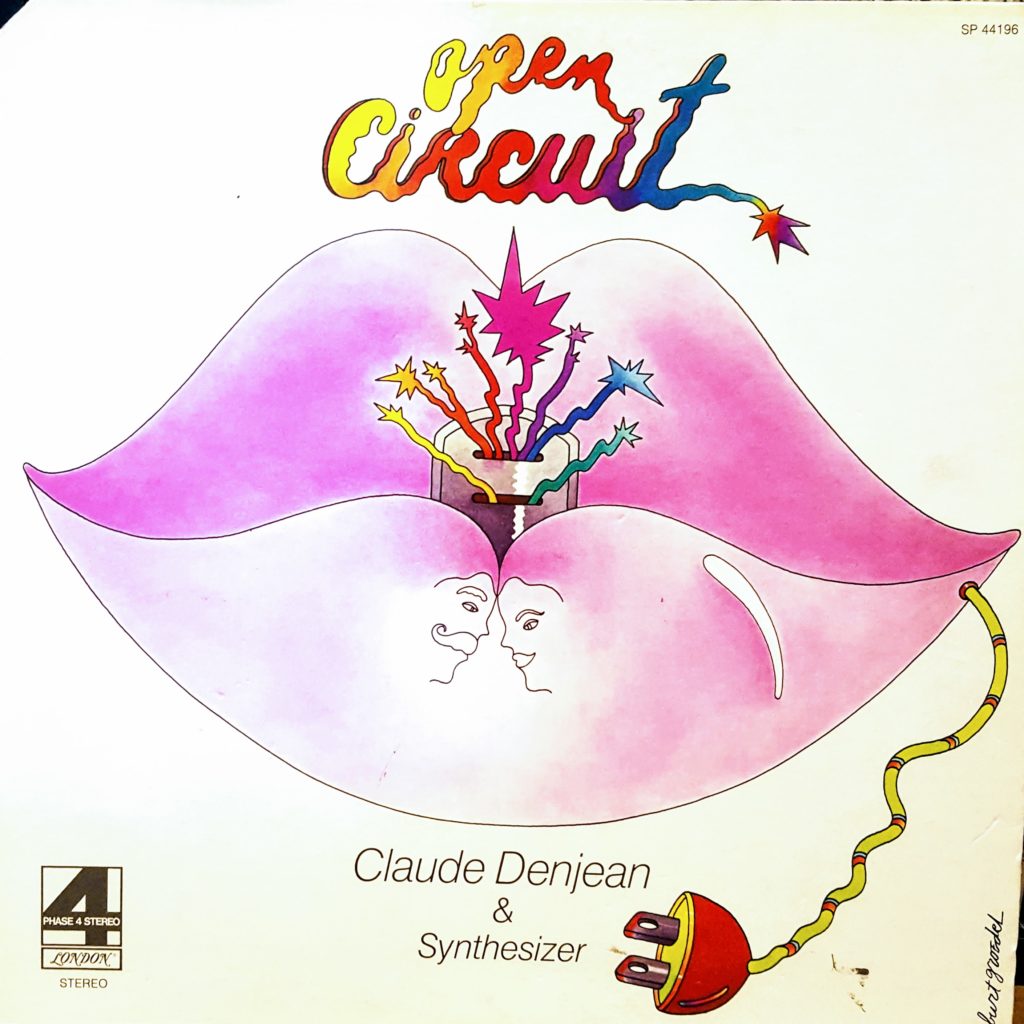
And if you did work on any of these albums back in the day, I’d love to hear from you. All my efforts to track down musicians who contributed to these records have failed. Norman Dolph, Frank W. Becker, I know you’re out there! I’d love to talk to you!
Leave a Reply